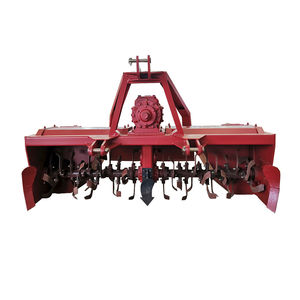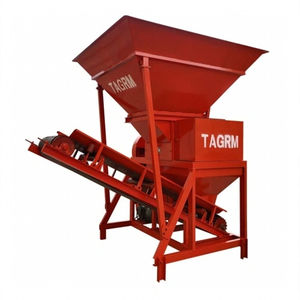
- Company
- Products
- Catalogs
- News & Trends
- Exhibitions
Cassava planter 2AMSU-1manual1-rowwalk-behind

Add to favorites
Compare this product
Characteristics
- Crop type
- cassava
- Type
- manual
- Number of rows
- 1-row
- Mobility
- towed, walk-behind
- Other characteristic
- bucket, semi-automatic
Description
The 1-row semi-automatic cassava planting machine is an agricultural equipment designed by Nanning TAGRM specifically to improve cassava planting efficiency and reduce labor intensity. This machine integrates multiple functions and aims to achieve mechanized operations in cassava planting. Its main features and functions are described as follows:
Manual feeding of stems: At the beginning of the operation, it is necessary to manually feed high-quality cassava stems into the designated entrance of the machine in an orderly manner. This process manually retains the preliminary screening of stem quality, ensuring the planting materials' high quality.
Automatic stem cutting: Once the stem is fed in, the machine's built-in automatic cutting system will accurately cut the stem into small sections suitable for planting according to the preset length. This step not only improves planting efficiency but also ensures the uniformity of each stem segment, which is beneficial for subsequent growth management.
Trench: Subsequently, the planting machine is equipped with a trenching device to create planting trenches of moderate depth and uniform width in the soil. This feature ensures that the stems can be accurately placed in the optimal growth position while avoiding inconsistencies and additional labor that may arise from manual trenching.
Suggest using our company's cassava harvester for harvesting.
VIDEO
Catalogs
1-Row Cassva planter
5 Pages
Related Searches
- Seeder
- Grain drill
- Precision seed drill
- Conventional seed drill
- Planter
- Tractor-mounted seed drill
- Towed planter
- Tractor-mounted precision seed drill
- Disc seed drill
- Automatic planter
- Seed drill with fertilizer applicator
- Mechanical planter
- Precision seed drill with fertilizer applicator
- Manual planter
- 2-row planter
- 4-row planter
- 1-row planter
- Semi-automatic planter
- 4-row precision seed drill
- 5-rows precision seed drill
*Prices are pre-tax. They exclude delivery charges and customs duties and do not include additional charges for installation or activation options. Prices are indicative only and may vary by country, with changes to the cost of raw materials and exchange rates.



















